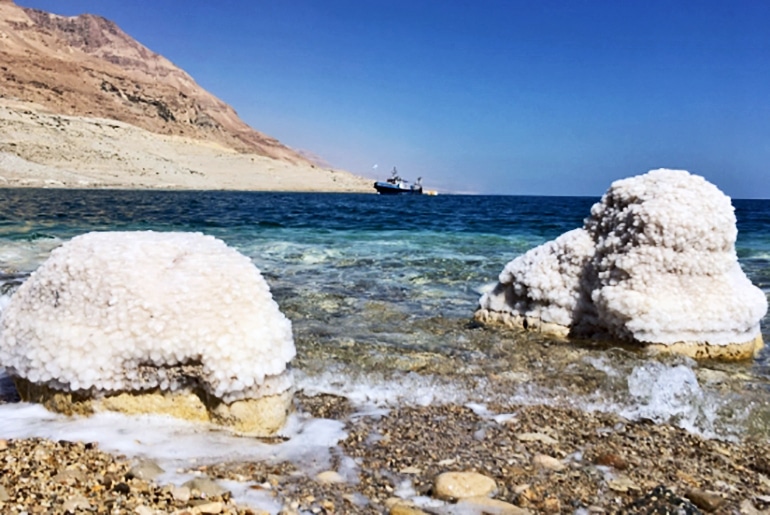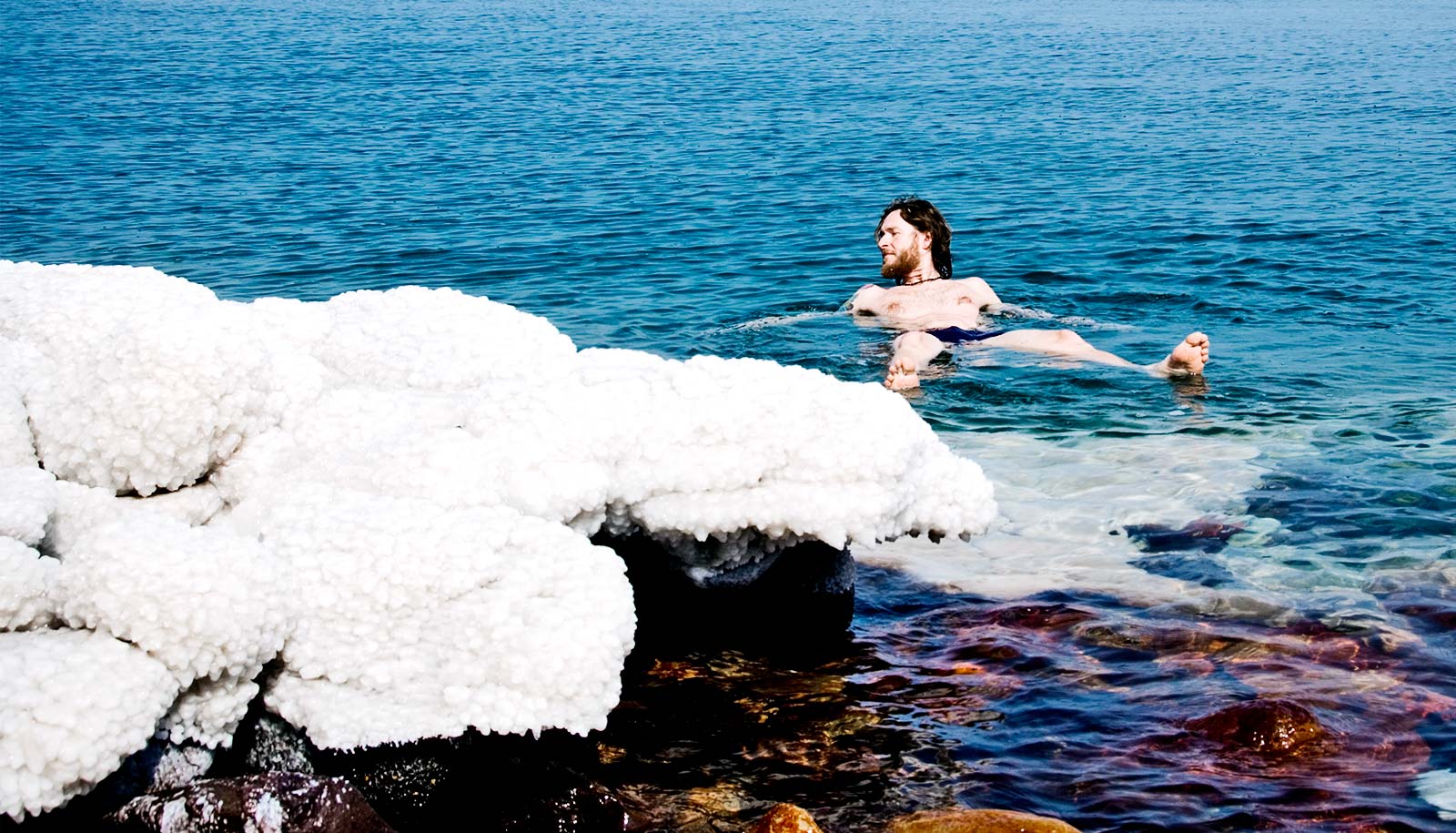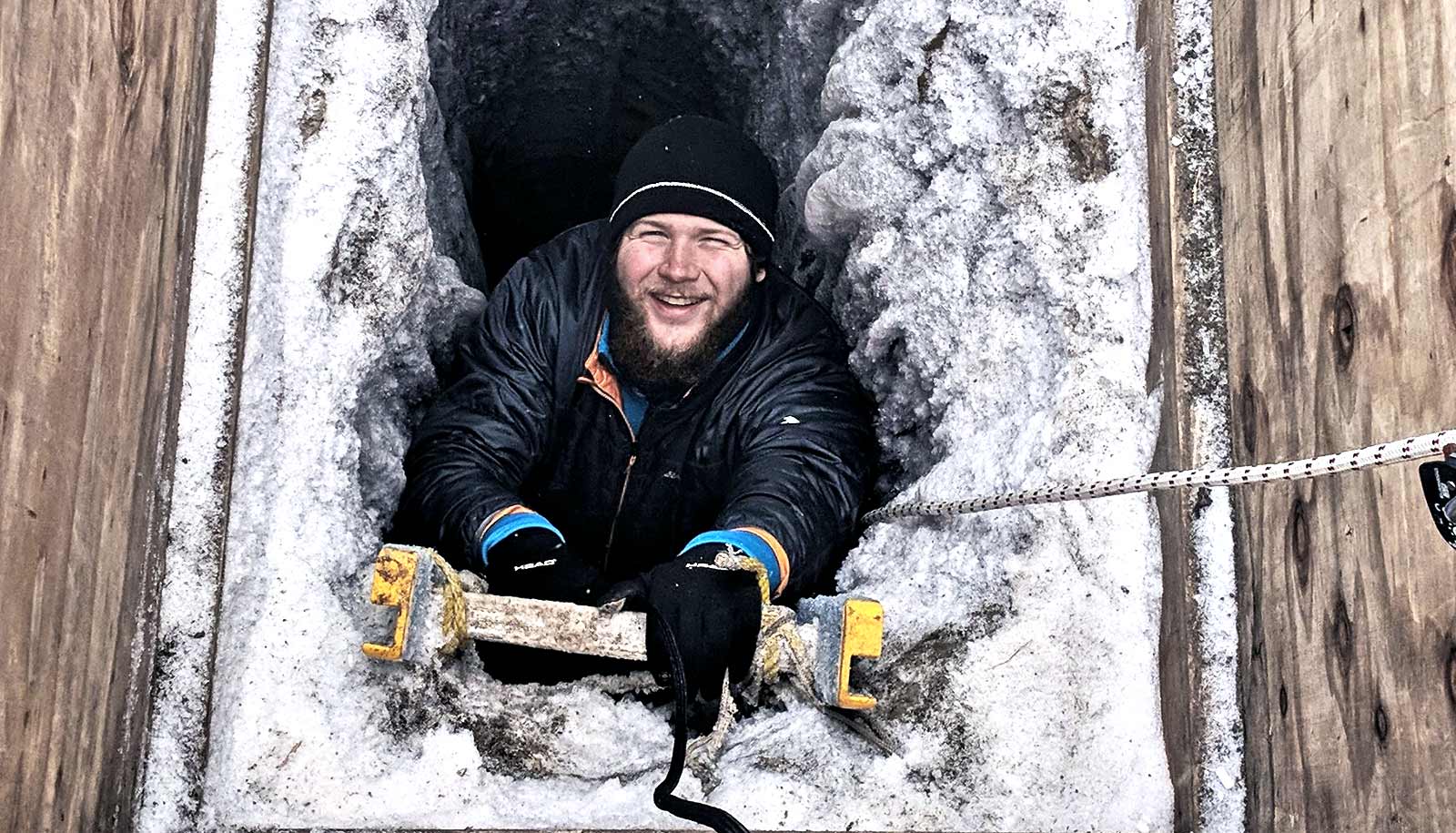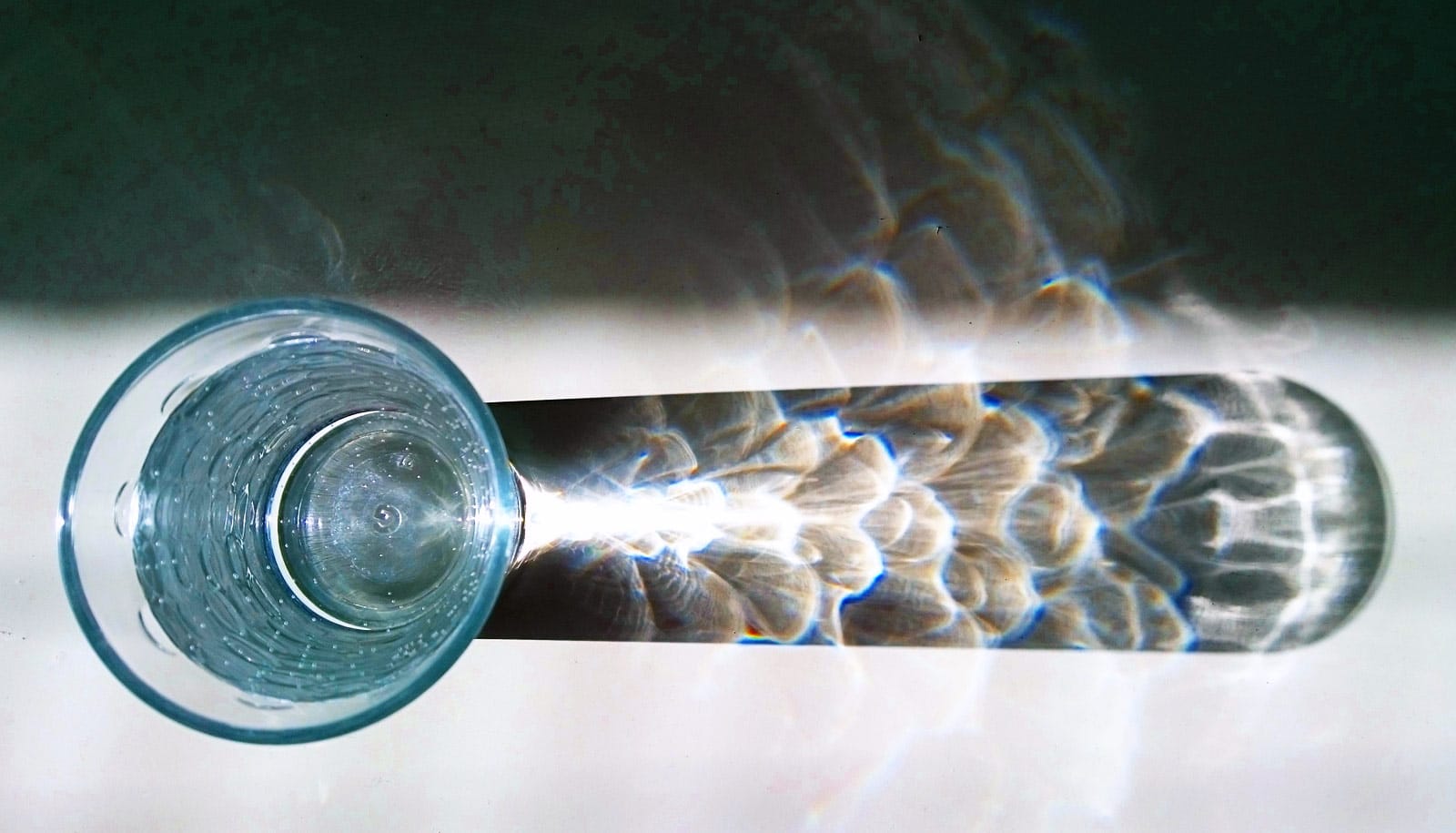New research may solve the mystery behind the the Dead Sea’s salt crystal “snowfall.”
It’s summertime at the Dead Sea, and for locals and visitors enjoying the large saltwater lake shared by Israel, Jordan, and Palestine, that means sun, sand, and… snow?
“It’s a bit counterintuitive,” says Raphael Ouillon, a PhD student in the lab of mechanical engineering professor Eckart Meiburg at the University of California, Santa Barbara. It’s the confluence of unique conditions at the Dead Sea that make salt crystal snowfall in the lake possible, he explains.
With a depth of about 919 feet (280 m) and salinity above 34% and rising, thanks to evaporation and diversion of freshwater sources that once contributed to it, the Dead Sea is the deepest hypersaline lake in the world. The salt precipitation began to appear in the early 1980s, when the salinity of the lake exceeded the point of saturation.

Dead Sea snow in the summer
Recently, Israeli geologist and collaborator Nadav Lensky of the Geological Survey of Israel and his team made a surprising observation regarding the precipitation of salt in summer. Suspecting their observations required additional fluid mechanics expertise, they called upon Meiburg’s group to complete the analysis of their findings, Ouillon says.
“Our research group, the Dead Sea Observatory, has set up a very unique field observatory to study the dynamics of salt deposits,” says Lensky. “The most intensive ‘snow’ of salt deposits appears in winter, due to cooling. A more surprising observation is that in summer salt dissolves in the less dense upper water layer, despite being the saltiest part of the lake. In summer, the salt ‘snow’ appears below the interface between this light top layer and dense bottom layer. We suspected that a process called ‘double-diffusive convection’ was responsible and reached out to Meiburg’s group to test our hypothesis.”
That hunch paid off, thanks to the numerical simulations the Meiburg research group made. “The density of water depends strongly on temperature and salinity. The saltier the heavier, and the warmer the lighter,” Ouillon says.
“In the Dead Sea in summer, the upper water layer is very salty due to evaporation, while the deep layer is less salty. At the same time, the upper layer is much warmer than the deep layer. The end result is that the layers are stable, with lighter water on top of denser water.”
However, the apparent stability of the system is rather deceptive, Ouillon says, because temperature diffuses much more quickly than salt. This results in an exchange at the interface between the two layers characterized by salt “fingers” that extend upward and downward from the centerline of that interface as the somewhat less saturated, cooler water warms and rises, while the saltier warmer water cools down and sinks.
“What makes the Dead Sea unique is that it’s already close to full saturation at any given time,” Ouillon says. The result is that the downward-moving fingers, which contain greater concentrations of salt, encounter the cooler temperatures of the lower layer of water. And that lower layer, due to its temperature, is unable to hold as much dissolved salt as the warm upper layer.
“So the condition becomes supersaturated and so the salt cannot remain dissolved in the water and it forms these crystals,” Ouillon says. Double-diffusive convection occurs in many fluid systems where density depends on more than one factor—from volcanic clouds to the cores of stars. It is particularly apparent in the Dead Sea because of its salt saturation and the great temperature difference between its upper and lower layers, which result in crystal formation.
Ending the mystery
The results of the study not only solve a decades-old mystery at the Dead Sea but also suggest processes by which thick halite layers are found in the geologic record, according to the researchers. They are currently taking a closer look at how these double diffusive fingers are interacting with other fluid flows.
“From my perspective as a geologist, the Dead Sea provides insight into the dynamics of deep hypersaline lakes and oceans, which were common in Earth’s history, as is evident from the large and thick salt deposits that cover Earth’s surface,” Lensky says.
“Understanding how different types of salt deposits form depending on the environmental conditions and on the properties of the lake provides a valuable tool to reconstruct paleo-climate, from the archive of the salt rocks.”
“There’s so much to look at with double diffusion,” Ouillon says. “It’s such a rich topic.”
Their work on the subject appears in the journal Water Resources Research.
Source: UC Santa Barbara


